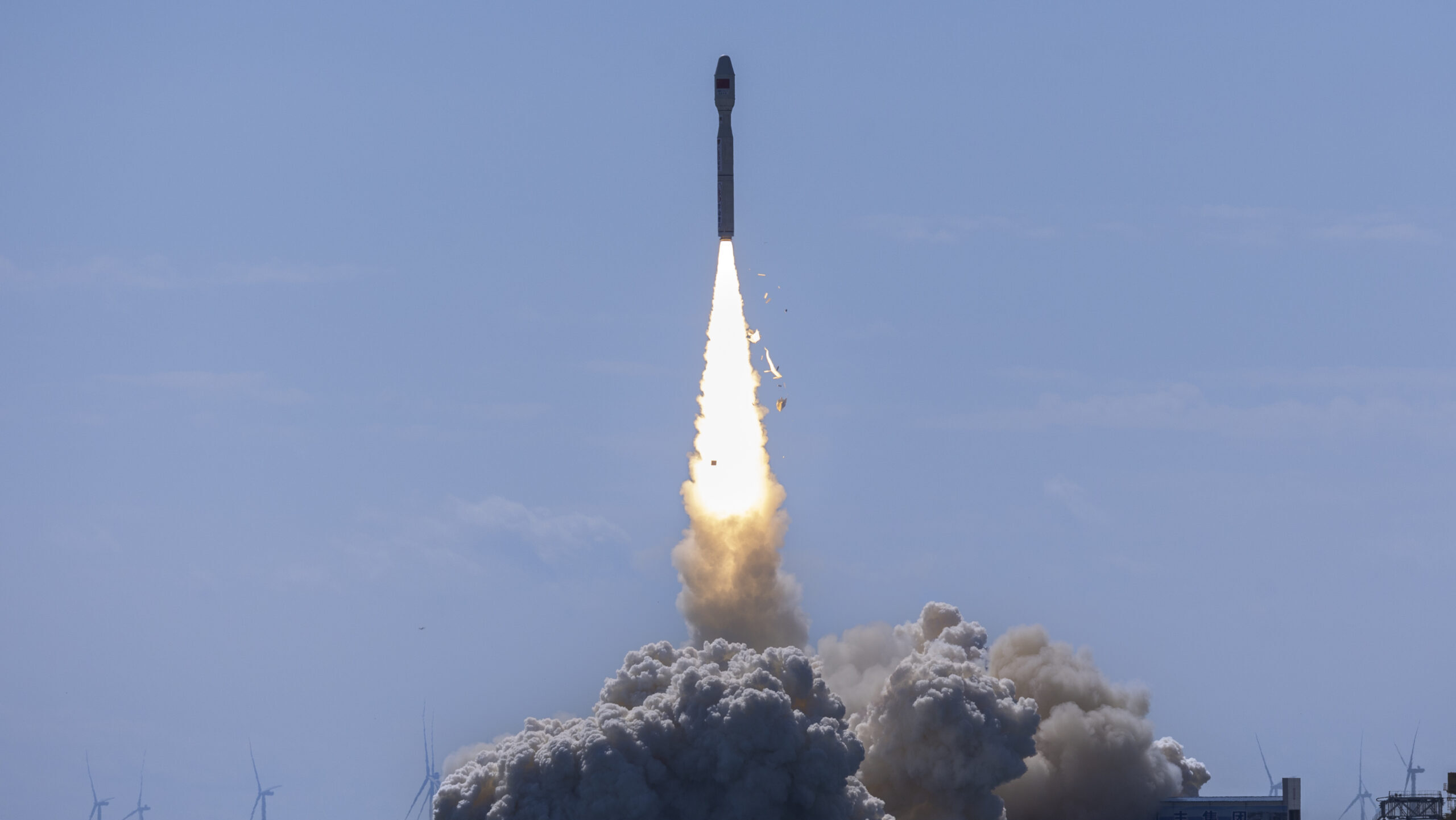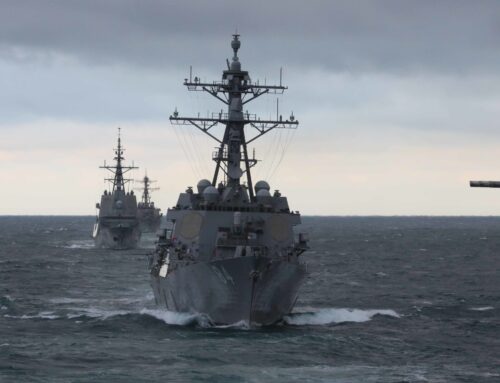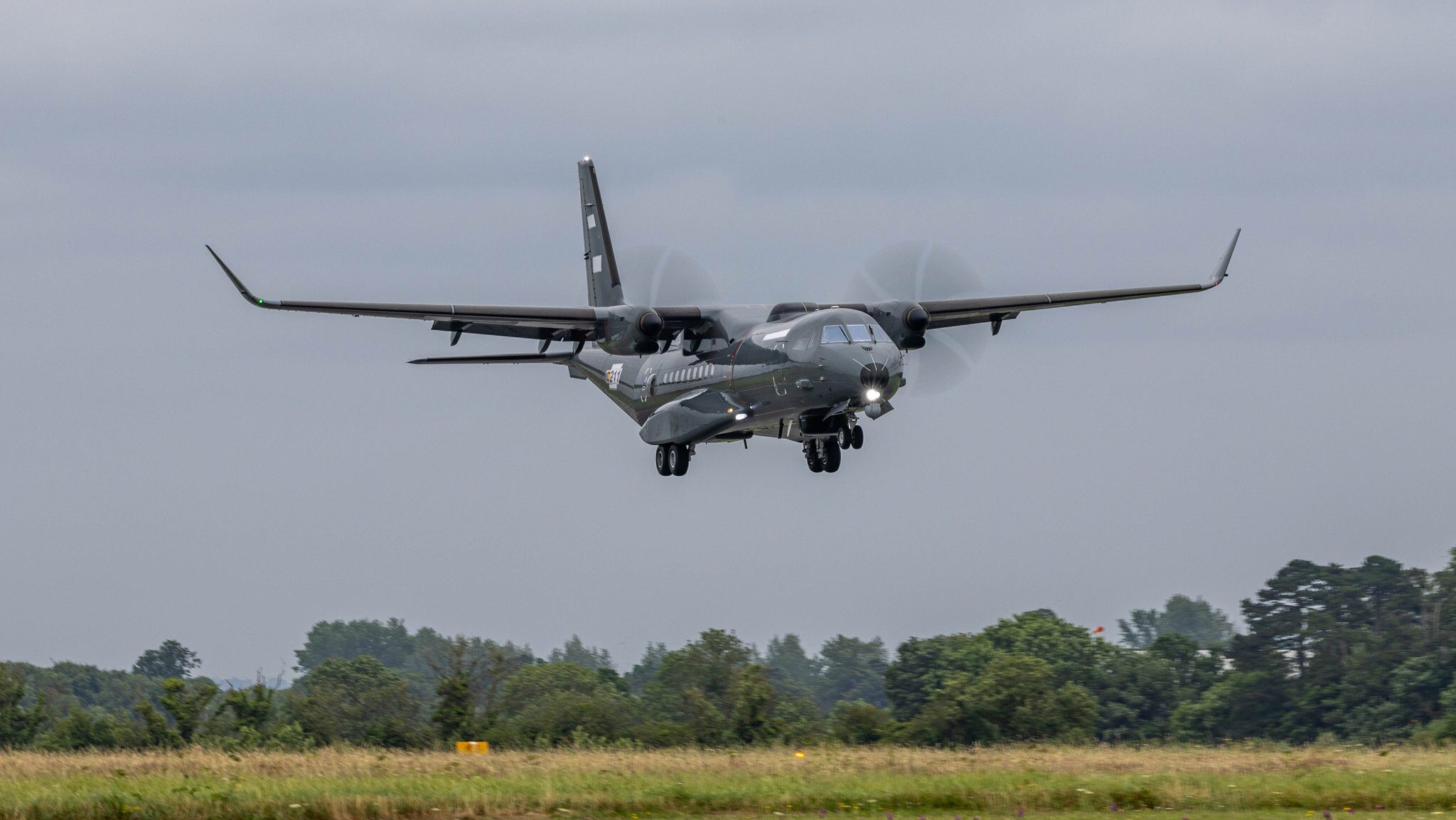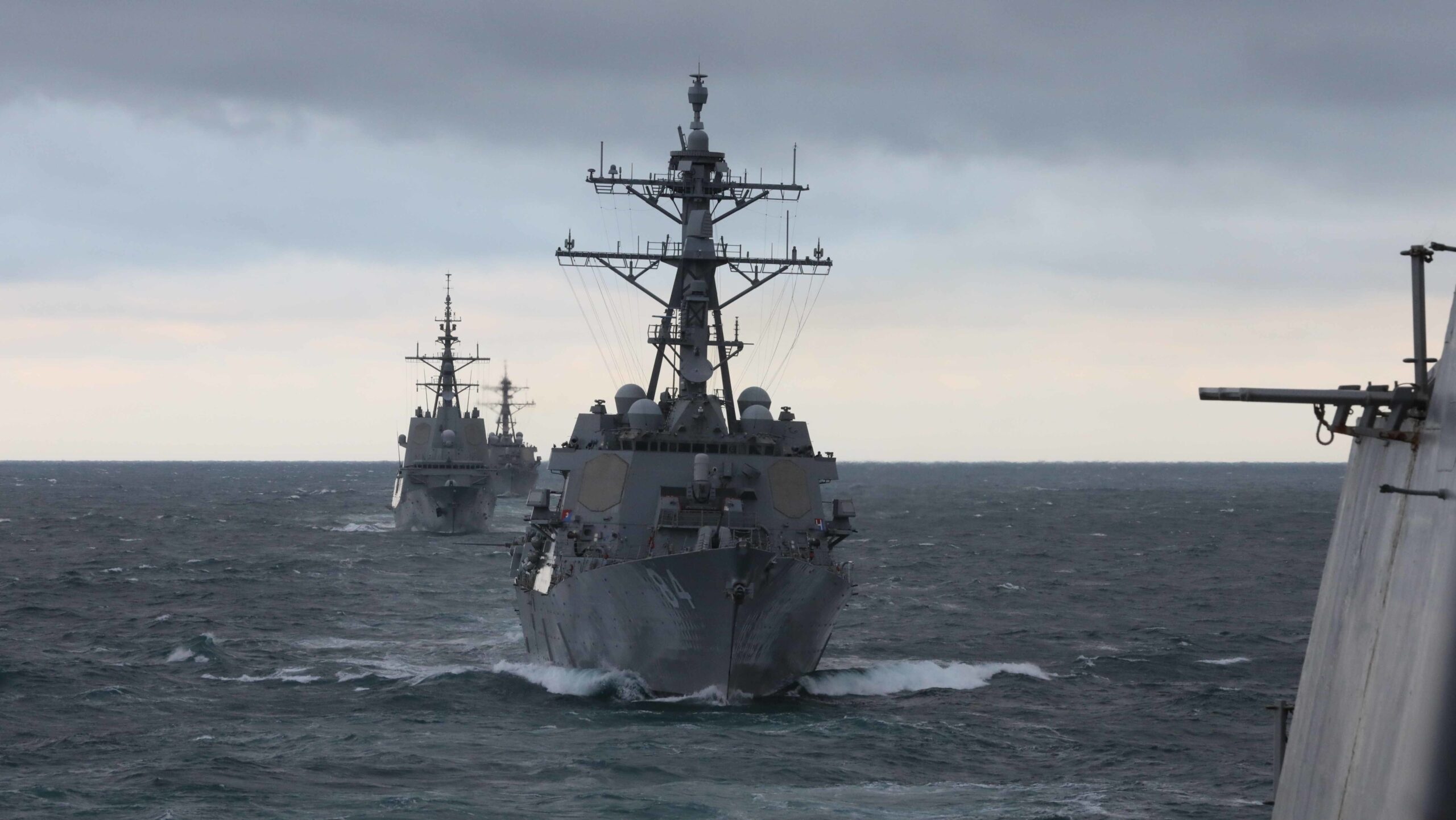A Smart Dragon-3 carrier rocket carrying Tianyi-41 and other satellites blasts off from the waters near the city of Haiyang on Sept. 24, 2024 in Shandong Province of China. Eight satellites were launched aboard a Smart Dragon-3 carrier rocket and entered its preset orbit successfully. (Photo by VCG/VCG via Getty Images)
WASHINGTON — A new assessment of global commercial remote sensing satellite systems shows that Chinese firms are edging out US commercial firms in capabilities across a broad range of sensor technologies.
The study produced a “Top 3” ranking of the world’s best commercial space-based remote sensing systems in 2024 framed as a mock Olympic Games. China grabbed the “gold medal” in five areas; the US in four. One company each from Finland and South Korea also nabbed gold.
The report, “Gold Rush: The 2024 Commercial Remote Sensing Global Rankings,” was released today by the Center for Strategic and International Studies (CSIS), Taylor Geospatial Institute, Taylor Geospatial Engine, and United States Geospatial Intelligence Foundation.
A new report by four research institutions show Chinese commercial remote sensing firms edging out US firms in technical capabilities. (Image credit: Kari Bingen, David Gauthier, and Madeleine Chang)
“While the United States has long been the global leader in space, the 2024 medal winners
spotlight the continued advancement of China’s remote sensing capabilities and the expansion
of its commercial space sector,” the report found.
“Those China flags matter,” said Robert Cardillo, former director of the National Geospatial-Intelligence Agency (NGA), during a CSIS seminar to debut the report. “We’re in a competition. It’s not a secret, okay? It’s an open competition, and as any world competition, state competitors are going to use everything at their wherewithal to create their advantage. So we should take it also as a warning that this game is afoot.”
Cardillo’s remarks echo the conclusions of the report’s three main authors, all affiliated with CSIS: Kari Bingen, director of the Aerospace Security Project; Dave Gauthier, senior associate and former head of NGA Commercial and Business Operations; and Madeleine Chang, Horizon Fellow at the Aerospace Security Project.
“The stakes are high. Should any one country dominate the commercial remote sensing market, not only could it gain economic advantages, but it would also control the information narrative about the entire planet, from the environment to natural resources to human conflict,” the report concluded.
The authors used 11 performance categories and open source information to assess company capabilities across the remote sensing technology landscape, including electro-optical (EO), synthetic aperture radar (SAR), and infrared (IR) sensors, the report explained. The assessment also included parameters relevant to each of those sensor categories, such as “spatial resolution, spectral resolution, number of imaging bands, and the number of operational satellites (or persistence of imaging), among others.”
A new report, “Gold Rush: The 2024 Commercial Remote Sensing Global Rankings,” compares the performance of commercial remote sensing satellites around the world. (Image credit: Kari Bingen, David Gauthier and Madeleine Chang)
The research was based in large part on a 2021 “Commercial Imaging Olympics” study by the NGA and spearheaded by Gauthier. That report, which used nine technical parameters that were also used in the new study, awarded three gold medals each to China and the US. That study helped spur the US Intelligence Community to open a door to acquiring foreign satellite imagery to bolster that provided by the National Reconnaissance Office’s fleet of spy satellites and its US commercial partners.
The report noted that in the new Olympic race, “nearly half of the podium spots went to satellite systems launched between 2021 and 2024, showing a large amount of dynamism within the last four years and the speed at which more advanced capabilities are being introduced in the global commercial marketplace.”
In addition, the authors presented recommendations that the US government “should take as ‘a regulator, investor, and customer’ to keep U.S. companies at the cutting edge of technology and globally competitive” — given that, whether policymakers like it or not, the US government (especially the national security community including the Defense Department) is “the primary customer and market driver.”
As such, the US government as a whole “will need to take a more strategic and active role in advancing commercial capabilities that must endure and be competitive against Chinese commercial offerings, among others,” the report elaborated. “This means building multiyear budget profiles for commercial remote sensing to create a stable demand signal, harmonizing government investment and private capital, aligning executive and legislative branch support, improving access to financial tools common in other economic sectors, and continuing to reform U.S. export policies and regulations.”
Sue Gordon, former principal deputy director of national intelligence, used her keynote address at the CSIS event to urge national security leaders to grab on to the opportunities provided by commercial capabilities to keep in front of US adversaries — by “thinking more about the outcomes we must have, rather than the things that we can build.”
She added: “You can only get to the future if you get let go of something that you have always believed in. We cannot hold on, whether companies or government, to everything that we have always believed to be true, you have to let go of some fixed points, otherwise you are dragging them and you won’t get there.”











